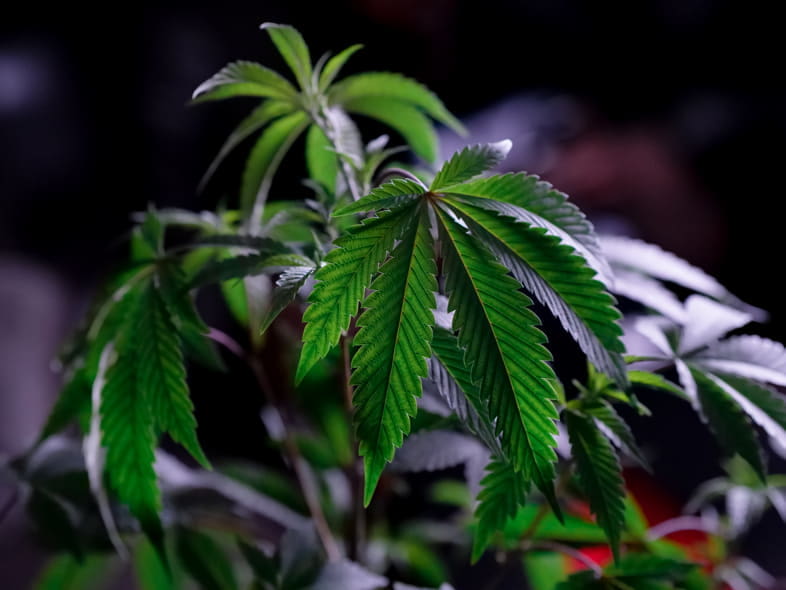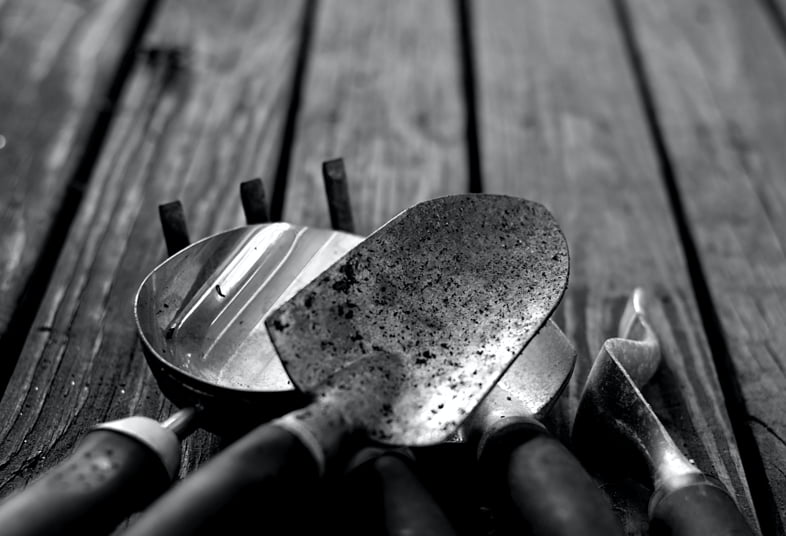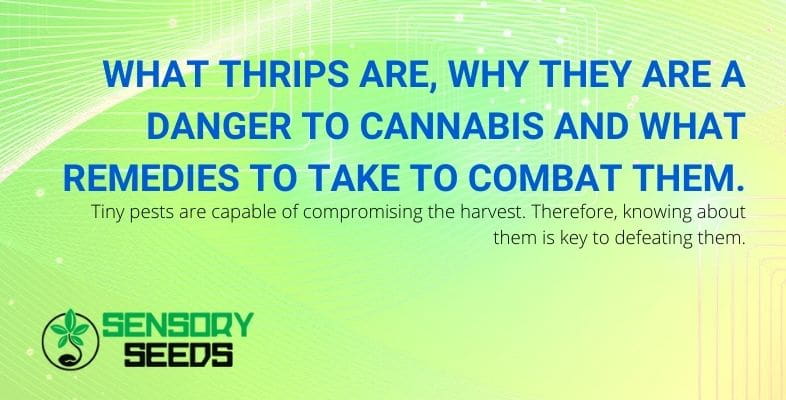Modified on: 20/09/2022
Tiny pests are capable of compromising the harvest. Therefore, knowing about them is key to defeating them
If you live in a country that allows it, you have probably already started growing your cannabis plants or are considering doing so.
What satisfaction you will get when you harvest the fruit of your labour and know that you have obtained it with care and attention.
After all, what could stand between you and your big, self-grown buds? Thrips!
That’s right, you may not know what they are, but believe me when I tell you that you would rather know by reading this article than by experiencing it yourself.
These tiny pests are capable of ruining weeks of cultivation in a short time. They spread quickly, and identifying them early on is very difficult: they measure less than a millimetre in length.
Their pest action weakens your plants and consequently affects the quality and quantity of your yields. And you don’t want that, do you?
This article explains how to manage this problem and protect your cannabis plants from these voracious pests.


What are thrips? And how to tell if they are infesting crops?
Thrips are pests that can do a lot of damage to the plants they infest. They typically attack herbaceous plants, but they do not disdain flowers, fruit plants and vegetable crops.
These insects’ favourite plants are cotton and hemp, but they often attack plants grown in greenhouses during the winter months.
Their appearance can vary depending on the species, particularly concerning colour: they are light-coloured with shades from white to green or brown and are very small. Their small size often makes them difficult to spot. Males do not even measure a millimetre in length (0.9 mm), while females are slightly larger, measuring 1.2 mm.
Their shape is elongated, and looking at them through a magnifying glass. You can see their snout, which is equipped with a stinger.
The difficulty in recognising their presence is also since they often like to take refuge inside flower buds or on the underside of leaves.
So how can we tell if the cannabis plant is infested?
Like all pests, thrips leave signs of their passage, or rather their presence, on host plants.
This type of insect feeds on the lifeblood of the plants they choose to attack and to do so. They mainly introduce their sting on the flowers, stems, and leaves, which will be pitted and eaten right at the affected spots. In this way, the thrips reach the sap to be sucked.
But what are the visible damages of the presence of these parasites?
The signs of infestation present themselves in a variety of ways:
- spots where the plant is visibly discoloured;
- visible suction bite marks on flowers stems and leaves;
- necrotic plaques;
- tiny white spots;
- deformation of buds and fruits.
This type of damage is caused both by the suction of substances contained in the plant, such as chlorophyll and by the reaction caused by contact with the saliva of these tiny insects, which is rich in toxic substances.
The consequences of thrips infestation rarely lead to the death of the plant but can undoubtedly be seen in the visible reduction in yield.
In short, a great nuisance since probably the only reason you grow cannabis is to harvest its buds.
I bet you now want to know everything you can do to prevent thrips from endangering your harvest.
Read on to learn how to prevent infestations of these annoying pests.
Read also: What is pinene and the beneficial effects of this terpene contained in cannabis?
What can be done to prevent thrips from infesting crops?
Although not particularly aggressive, thrips are pretty challenging to eliminate. That is why you should devote some attention to prevention. In the end, you know, prevention is always better than cure!
The first thing to do to prevent thrips from taking over your marijuana plants is to put in place constant and thorough checks. But that is not all.
Through minimal care, it is possible to ward off the attack of these almost invisible enemies.
- Make sure, first of all, that you keep the environment in which you grow your cannabis very clean, especially if it is indoor cultivation.
- Equip yourself with yellow or blue chronotropic sticky traps that you can place in various places in your cultivation site, whether indoors or outdoors.
- Disinfect the tools you use to carry out your cultivation daily.
- Scatter predatory antagonist insects, such as ladybirds, will be happy to feed on thrips, helping greatly in limiting the spread if there are any around.


These methods are the leading measures you can take if you prefer to avoid using chemicals. But they are not the only ones.
In a greater spread, you would do well to consider more aggressive and more rapidly effective methods.
So let us see how to eliminate thrips if they have already infested your poor marijuana plants.
But what to do if the pests have already made themselves comfortable on your plants?
As I mentioned earlier, to carry out proper pest control, it is best to consider chemical methods, which are more aggressive for the thrips and the plants.
Here too, you can choose whether to rely on synthetic substances or try the path of biological pest control. I will now outline the main options you have to eliminate this cross.
Speaking of biological methods, citronella soap is a valid method of combating an infestation, although it seems to be used more in the preventive phase. Spray it constantly on the plants to inhibit the action of thrips significantly.
Of course, smoking soap-soaked buds may not be appealing, but an organic method is still less harmful than some chemicals.
Coming back to us, the products most commonly used for the removal of thrips infestation are:
- pyrethrum: this insecticide is covered in organic cultivation but is not suitable for various vegetable or fruit crops due to its degree of toxicity;
- Pure neem oil: this is non-toxic but is very effective as it strengthens the plant’s immune defences and prevents the proliferation of eggs;
- rock powder, also known as earth or diatomaceous earth: this product has a primarily mechanical action on thrips. Let me explain. The micro-dust is very sharp when thrown on tiny organisms such as thrips and attacks them by cutting off wings and limbs.
Read also: How to know when the weed is ready? Three tips for deciding when to harvest cannabis
In conclusion, how can cannabis plants be prevented from being infested by thrips?
This genus of pests feeds on the lifeblood of plants and lurks mainly in the flowers and the leaves.
Thrips suck up chlorophyll and other valuable elements for plant development through their string-like beaks, weakening the plants and compromising their yield.
Noticing their presence in time is rather complex due to their small size, but you can quickly notice the signs of their passage if you look more closely. To feed these annoying pests, consume the leaves to the point where they can easily take up nutrients.
The plant attacked by thrips has numerous small holes, and at the stings, you can often see a noticeable discolouration caused precisely by the lack of chlorophyll.
The best way to avoid wasting time growing marijuana plants that will not produce the desired yield is prevention. It is possible to prevent infestation and limit the potential proliferation of the few specimens present through various measures.
If you want to learn more about the world of cannabis, visit our website. At SensorySeeds.com, you can find the best autoflowering seed varieties, feminized seeds and fast flowering seeds for collecting purposes.









